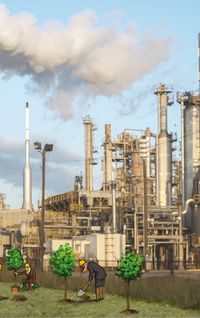Scaling conservation
A US$656m conservation-linked bond for Ecuador arranged by Credit Suisse anchored a landmark US$1.6bn debt exchange that carried the so-called debt-for-nature market to unprecedented volume and reinforced its ability to connect emerging markets issuers with an investment-grade investor base normally closed to them.
The deal generated over US$450m for conservation of the Galapagos Islands’ highly biodiverse and fragile marine ecosystem, while enabling more than US$1.1bn of debt service savings and forgiveness for the Latin American country.
“The scale and breadth of the transaction was just unparalleled,” said one participant. “It shows the naysayers that it can be done at scale.”
Credit Suisse had completed notable DFN exchanges in the region previously – in Barbados and Belize. These followed the Seychelles’ pioneering transaction in 2016.
But Ecuador, the Swiss bank’s final DFN deal before being taken over by its domestic rival UBS a month after closing in May, dwarfed all its predecessors combined.
UBS declined to comment on past Credit Suisse activity.
Despite Ecuador’s Caa3 rating, Moody’s rated the GPS Blue Financing DAC new issue at Aa2. This reflected political risk insurance from the US International Development Finance Corp on a mirror loan to Ecuador, plus a partial Inter-American Development Bank guarantee.
The entire 18-year 5.6% new issue went to investment-grade buyers, diversifying the sovereign’s investor base.
The UK’s Legal & General Investment Management was the cornerstone investor with as much as US$250m.
Proceeds funded a US$656m buyback of US$1.628bn face value of Ecuador’s 2030, 2035 and 2040 lines at prices as low as 35.5.
In contrast to the earlier deals, the new issue was not labelled blue. This anticipated the International Capital Market Association reiterating in September that bonds should only carry blue labels if all their proceeds are used for eligible projects (just like green bonds).
This is very unlikely in DFN deals as funding conservation initiatives is only one of several goals, along with reducing debt service costs and reaching new investors.
Ecuador committed some US$12.05m a year over the bond’s life to conservation, plus an annual US$5.41m to fund an endowment for the Galapagos Life Fund. The endowment should total some US$227m at maturity in 2041.
With multiple government ministries and other participants to orchestrate, the deal took around two years to structure.
It appears set to trigger further DFN activity. Soon afterwards Gabon completed a US$500m deal, while Barbados is preparing its second transaction.
Ecuador is also considering further deals to help preserve its Pacific ocean coastline and Amazon rainforest. It is unclear whether recent turbulence in the country will affect these plans, though the first bond was structured to be unaffected by changes in government.
To see the digital version of this report, please click here
To purchase printed copies or a PDF of this report, please email shahid.hamid@lseg.com in Asia Pacific & Middle East and leonie.welss@lseg.com for Europe & Americas.











